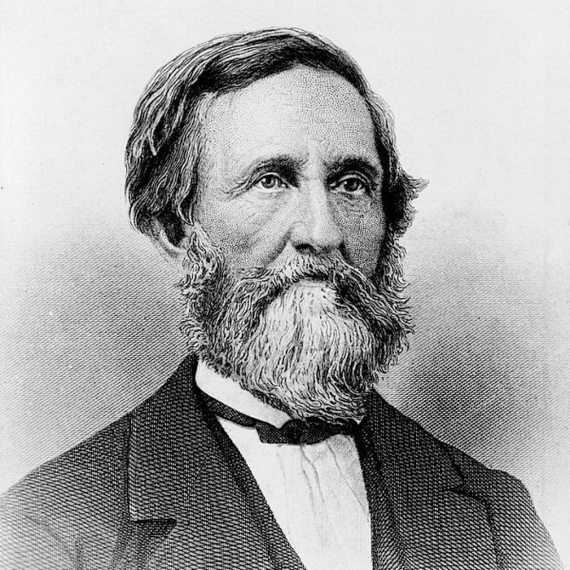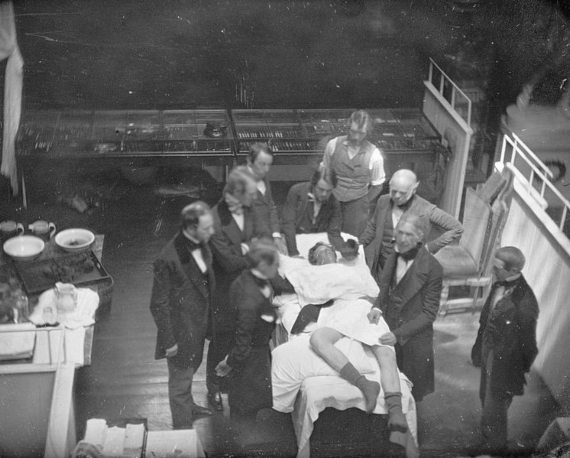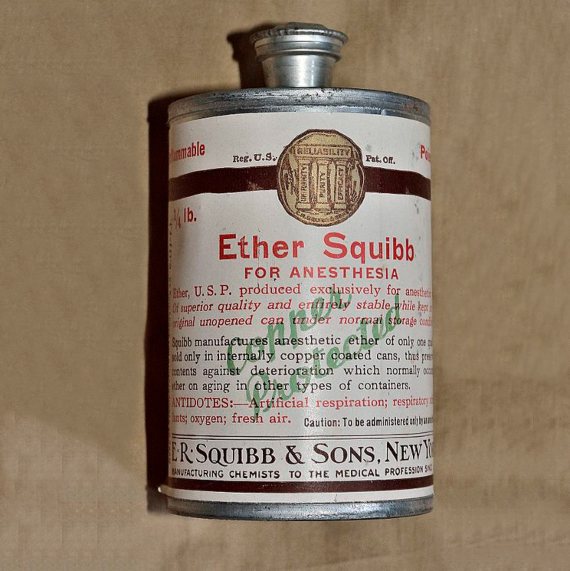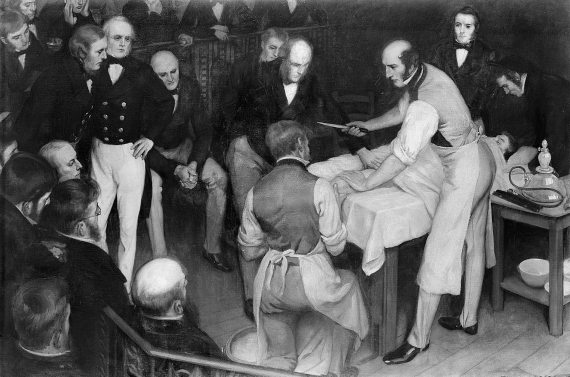The 30th of March 1842 was a Wednesday. This is not a date usually remembered as memorable, except perhaps by the admirers of the woman who died that day, French portrait painter Madame Le Brun, or the man who was born that day, American philosopher John Fiske. However, on that Wednesday, one of the greatest advances in the history of mankind first saw the light of day: anaesthesia. Curiously enough, although nowadays we could not conceive of our modern world without it, from the time a surgeon from Georgia, USA named Crawford Long performed the first painless operation on a patient until this practice became established, several years would pass, during which this revolutionary discovery was condemned as a “satanic influence” or a “quagmire of quackery.”

The aspiration to operate without pain is probably as old as the most rudimentary surgery itself. According to some references, the opium poppy (Papaver somniferum), the source of opium, was used in Mesopotamia until maybe 4,000 years before our era. During ancient times, other plants such as cannabis, coca, henbane, aconite or mandrake, and practices such as acupuncture or carotid compression were used to produce brief unconsciousness; however, none of these were sufficient. In the 16th century, doctors like Paracelsus or Valerius Cordus already knew about ether, which was then called sulphur philosophorum or “sweet oil of vitriol.” Strangely, although Paracelsus observed its sleeping and analgesic properties, it took three more centuries before it was first used as an anaesthetic.
At that time, a surgical operation was an inhumane torture, a last resort to save a life, but limited to the limbs and superficial areas; the internal organs and the inside of the skull were inoperable and off limits. Most patients were tied to the operating table or held down, and some even fled; when the famous British surgeon Dr. Robert Liston was preparing to operate to remove a bladder stone, the patient escaped and locked himself in the bathroom. Liston broke down the door and brought the hysterical patient back to the operating table to finish the procedure. So appalling was surgery at this time that speed was of the essence; Liston has been nicknamed “the fastest knife in the West End.” “Time me, gentlemen,” he used to say. He was able to amputate a leg, from the first incision to the final suture, in just two and a half minutes. According to stories from the day, some surgeons would cry or vomit after particularly gruesome operations.
A live mastectomy in 1811
One of the most famous descriptions is that from English writer Fanny Burney, who in 1811 underwent a live mastectomy to remove what was believed to be breast cancer. “So excruciating was the agony,” Burney would write, that she could not stop screaming throughout the operation; the novelist described how she felt the scalpel separating the tissue from the bone and then scratching her ribs, and noted in her chronicle the surgeon’s expression of horror, as pale as she was.
It is also noteworthy that the formal discovery of anaesthetics for medicinal use came about through their initial use as recreational drugs. In 1799, English chemist Humphry Davy, discoverer of several chemical elements, began to experiment with nitrous oxide, noting its ability to provoke laughter and postulating its use as an anaesthetic for painless surgery. Davy and other contemporaries became addicted to laughing gas, and in the 1830s there was talk of “ether frolics,” meetings at which nitrous oxide or ether was dispensed to experience its curious effects, including the suppression of pain.

In that context, the use of ether as an anaesthetic would not be long in coming. These days, a plaque in Boston reminds us how in October 1846, at Massachusetts General Hospital, ether was first used as an anaesthetic. In this institution, a surgical operating amphitheatre is today preserved as a museum; named the Ether Dome, it is where dentist William Morton, a participant in those ether frolics, administered ether to a patient so that surgeon John Warren could remove a tumour from his neck without the least pain. “Gentlemen, this is no Humbug,” Warren told an astonished audience.
Ether and a conscientious country physician
News of Morton’s procedure spread quickly. But for decades, celebrations of that operation ignored the fact that it was not really the first public demonstration of ether anaesthesia. Such an honour belongs to Crawford Long, then a rural doctor in Georgia with a sound education and also familiar with ether frolics, as was his patient, James Venable. It was for this reason that Venable agreed to inhale ether so that Long, before several witnesses, could remove a tumour from his neck four years before Morton and Warren’s operation.
“As far as I know, Long and Morton never met and likely only became aware of each other when Morton began to pressure the U.S. Congress for recognition and monetary compensation,” Roger Thomas, professor emeritus of behavioural neuroscience at the University of Georgia and a scholar of Crawford Long, told OpenMind. Thus, it is not a case of appropriating someone else’s discovery; both men arrived at the same finding, but Long would not publish his results until 1849, after numerous operations. “Long was a careful and conscientious country physician whose cases occurred infrequently, so it took a few years to establish to his satisfaction that ether was, indeed, a viable and reliable anesthetic,” says Thomas.

In contrast, Morton was not so scrupulous. “He was a scoundrel who disguised the anesthetic ether he used by colorizing it and adding disguising odorants in order to patent and sell it,” Thomas notes. “He even gave ether the false name Letheon. Morton’s scam was quickly revealed, and as ether was in the public domain, it could not be patented.”
An invention of the devil
But beyond the different attitude of the two doctors, which for a long time would result in general recognition for Morton and the historical oblivion of Long’s achievement, it is even more surprising that not all medical professionals were enthusiastic about the colossal discovery of painless surgery. There were those who did not believe in it, such as Robert Huston, director of the Philadelphia Medical Examiner: “We are persuaded that the surgeons of Philadelphia will not be seduced from the high professional path of duty, into the quagmire of quackery, by this Will-o’-the-wisp.” Others did recognize its effects, but vilified them on religious grounds: “I think anesthesia is of the devil, and I cannot give my sanction to any satanic influence which deprives a man of the capacity to recognize the law!” wrote William Atkinson, first president of the American Dental Association. “I wish there were no such thing as anesthesia! I do not think that men should be prevented from passing through what God intended them to endure.”

However, by the end of 1846, the use of anaesthesia was beginning to spread. Liston was the first to use it in Europe, on 21 December. “We are going to try a Yankee dodge today, gentlemen, for making men insensible,” he told his audience. When the patient woke up a few minutes after his leg was amputated, he asked when the operation would begin. For her part, Fanny Burney lived to be 87; it is not known whether her tumour was actually cancerous. She died in 1840, two years before the day when surgery would begin to change forever.
Javier Yanes
@yanes68
Comments on this publication